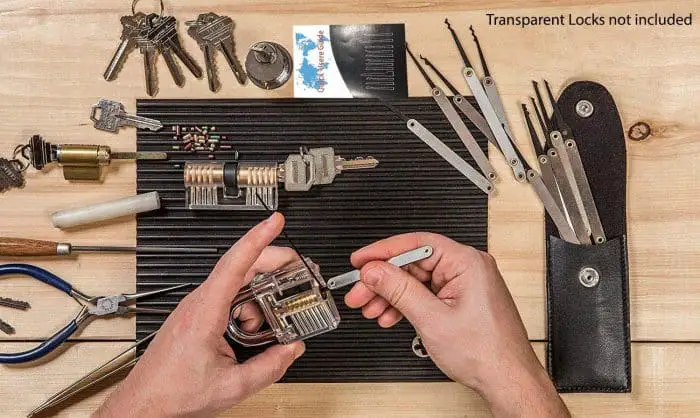In a survival situation, you’ll need to open things that may not belong to you.
Do you know how to pick a lock?
The skill of lock picking can be a lifesaver.

We’ve all seen the secret agents picking locks in the movies. That’s pretty cool, but it could also come in very handy in an SHTF situation.
What if you are trying to hide your car and there’s a padlocked gate blocking your way? What if your child accidentally locks you out of the house? What if you need to get into a gated area and a lock is the only thing standing between you and vital resources like food or medicine?
Sure you could shoot that lock, or smash it, or cut it; but why not be stealthy and hide the fact that you were ever there? You can use your lock picks to open that lock!
This is me after a few days of practicing lock picking during some slow times of my day.
See how easily I defeated that Fortress 40mm Padlock? I’m not even good at lock picking…..yet.
I’m all for stealth whenever possible. If you leave a trail of busted locks, doors and windows, anyone who might be following you will have a path of destruction to follow your trail. Pick that lock with lock picking skills
There is even a set of lock picks hidden inside a false credit card for secret agent carry!
Keep in mind that lock picking is not illegal. It is used in law enforcement, by locksmiths, security professionals and by magicians. Never open a lock that you don’t own or have permission to open. We do not condone illegal activities.
1) Sharpen your Lock Picking Skills with CutAway Locks
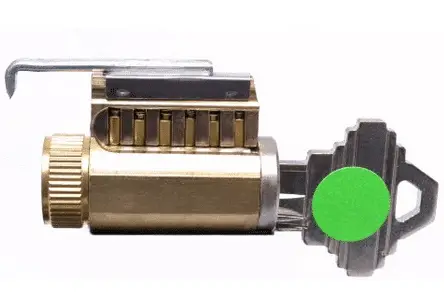
I’ve been tinkering with lock picking for quite a while, and to be honest, I’m not great at it. I have gotten much more proficient by using CutAway Locks.
Cutaway locks allow you to see the pins as you move them, so you can understand the tactile response when they move into the proper place.
Many of the clear plastic locks are also able to be “rekeyed”. This means you can create a lock with a single pin and add more and more pins as you become proficient. Then you can swap pins into an almost limitless number of combinations to simulate different locks.
I started out with the SouthOrd Visible Cutaway Practice Lock with Standard Pins (I also bought its advanced version, SouthOrd Visible Cutaway Practice Lock with Spool Pins).
The SouthOrd Visible Cutaway Practice Lock is simply a lock with a transparent Lucite housing, allowing you to see all the internal workings as you pick.
I have gotten pretty decent with the SouthOrd Visible Cutaway Practice Lock, but It isn’t able to be rekeyed, so I’ll need to upgrade at some point to something similar to the EZ Rekey CutAway Practice Lock, which can have its pins changed.
Practice makes perfect, but there is no substitute for being able to see the inner workings of a lock as you pick it. If you want to get into lock picking I recommend that you sharpen your lock picking skills with cutaway locks.
Keep in mind that lock picking is not illegal. It is used in law enforcement, by locksmiths, security professionals and by magicians. Never open a lock that you don’t own or have permission to open. We do not condone illegal activities.
Lock picking a Brinks 40mmI picked this Brinks padlock using the Southord 14 piece Lock Pick Set. I keep going back and forth about pin 1, I think it could be a security pin, as sometimes when I pick it slowly I get some counter-rotation.
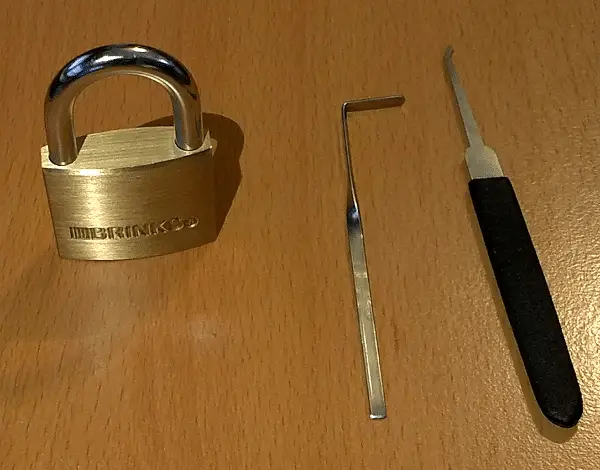
2) Lock Pick Sets:
- Southord’s Lock Pick Set
- KeepShooting.com has a great starter set of Lock Picks: Lock Pick Set – 8 piece Make sure to order a couple sets to get more from the shipping cost
- Amazon.com has some lock picks too. Amazon.com Lock Picks
Keep in mind that lock picking is not illegal. It is used in law enforcement, by locksmiths, security professionals and by magicians. Never open a lock that you don’t own or have permission to open. We do not condone illegal activities. Tool Tip: Free Tension Wrench for lock picking.
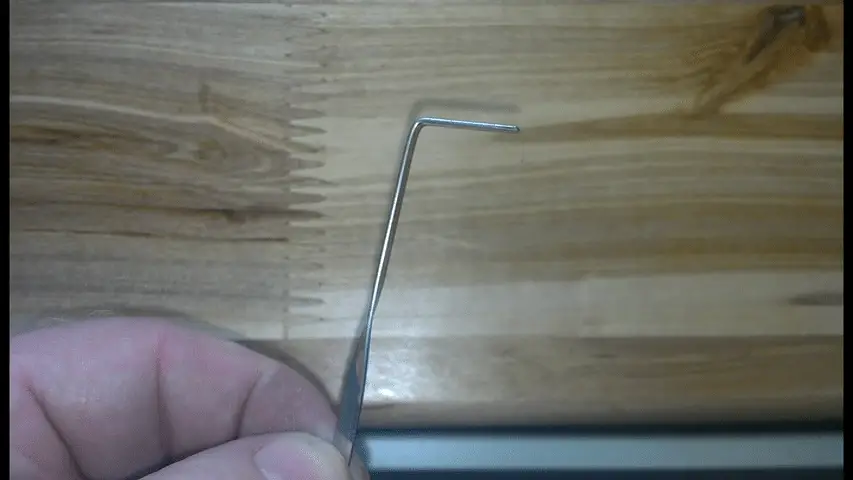
Make your own free tension wrench, for lock picking, from an old windshield wiper! Not only are you getting into an interesting hobby, that could come in very handy, but you are also recycling.
Not only are you getting into lock picking, an interesting hobby, that could come in very handy, but you are also recycling.
A. How to Design a Paperclip Lock Pick that Works
Ever lost your keys?
Well, regardless of the situation, finding yourself stuck in front of a locked door to your house can be annoying. But do you know some bit of lock picking skills can save the day? Yes, in fact, it’s pretty simple, and that’s what am going to show you precisely!
We are going to practice how to make a Tension Wrench and Lock Pick rake with using two simple paperclips and a pair of pliers. With a few modifications to the paperclips, you can easily bypass most standard locks.
After this, you should be able to make simple picks on your own.
You only need to buy cheap padlocks and try to work on your raking skills. However, remember that it doesn’t mean that you’ll be cracking every locked door immediately. Lock picking is a skill that takes practice.
That said, let’s get right into it!
What You Need to Have
- 2 big paperclips
- Pair of pliers
- Padlock
The good thing is that most of the materials you’ll need for picking a lock are easily accessible.
Why two paperclips?
You will use one paperclip as a tension wrench and the other one as a lock pick. The pliers are for shaping the paperclips. Although you can use your hand, the pliers make your work much easier.
Also, ensure that the paperclip can fit into the lock and has a good length so that you can insert it into the lock and still get a good hold.
B. Shaping the Paperclip
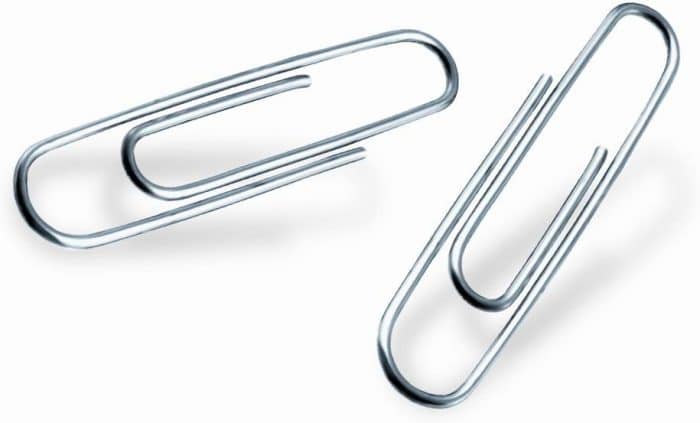
- Start with unfolding the large edge of the paperclip two times to get a straight portion. The straight part will go into the lock as a pick.
- You can make a tiny upward bend on the tip of the pick to depress the pins when picking the lock (Optional).
- Now make your tension wrench. Unfold the edge of the paperclip to make a 90° angle out of the straight portion. Alternatively, you can stretch both ends of the paperclip and make a curve at the end. Using a wrench press down the curved end until it makes a 90° bend that’s about 1 cm long.
C. Picking the Lock
1. Gently insert the tension wretch inside the keyhole (shear line). You’ll need to apply pressure to turn the tension wrench, but you should be careful to avoid exerting too much pressure that will distort the shape of the tension wrench.
2. Start turning the wrench in a rotational manner that unlocks the lock. It can be challenging if you are not certain of the right way it should turn. Since it is important to turn the wrench in the right direction, here are some of the ways you can use to test which is the right direction the key would turn:
- Guess which direction the lock opens. This gives you a 50-50 chance, and you might even open the lock in the first guess.
- Use your sensing skills. This is suitable when you are sensitive to touch since you can easily detect which direction the lock opens when you turn the tension wrench. Normally, you will feel a reduced pressure in the right direction that opens the lock.
3. Insert the pick into the keyhole until it touches the upper part and remove it quickly as you jiggle the pick upwards (raking).
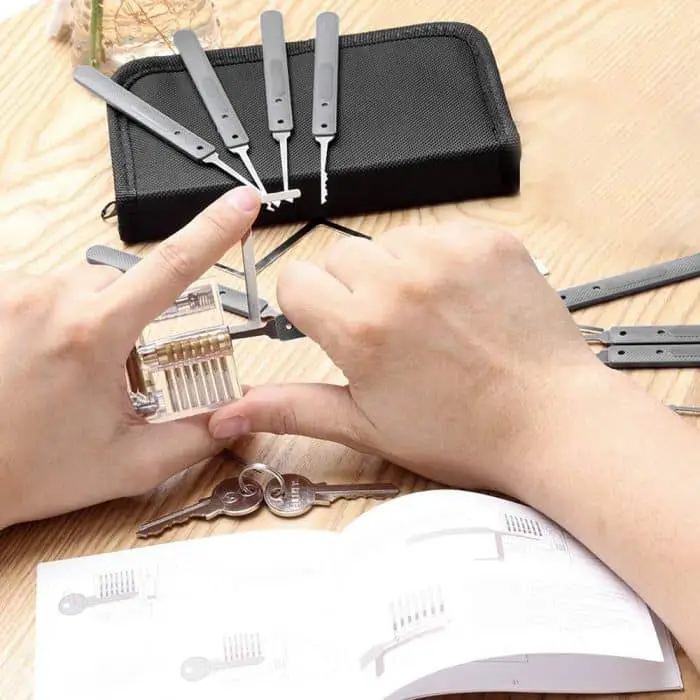
Repeat this many times to set the pins. Some locks could have up to 5 pins, and all of them need to be depressed for the lock to open. When a pin gets unlocked, you should feel a slight clicking sound or a slight give.
While you are doing this:
• Maintain the pressure on the tension for the lock picking to work properly.
• Avoid yanking the pick out. However, it should still be a quick move with a smooth motion.
4. Continue applying pressure until all the pins are unlocked. Once you hear a click or snap, rotate the tension wrench to get the lock unlocked.
4) How To Bypass A Lock Using A Credit Card
So, you misplaced your key again, and this time the only tool you have is a credit card. How can you use it to bypass the lock? First, this technique might work provided that your door has a simple knob lock with a slanted-latch or a spring-latch.
Second, you need to have the right card to bypass the lock. Although this is not the best method to use, it might be the only shot you’ve got. This is why mastering some skills on using the credit card to unlock a lock is essential.
But the method could be effective only if you begin by choosing the right credit card. So, let’s start by looking at some of the best cards you can use and the kind of locks that can easily be bypassed by the credit cards.
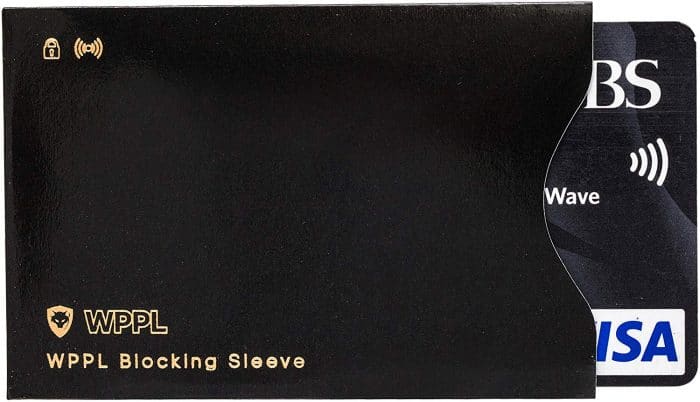
Choosing Your Card
Unlike what you might have seen in movies where it takes the hero only seconds to bypass a locked door using a credit card, lots go into the process before the door gets unlocked. The card you’ll be using has to go through several bending and wiggling, a kind of thing you don’t like to subject your credit card.
Furthermore, some credit cards are stiff and thick and could easily break. This is means that need to get something that’s flexible and thin. Here are other types of cards that you can use:
- Membership cards
- Gift cards
- Insurance cards
You can even cut a strip from a plastic bottle if you can’t find a card around you.
Slant-Latch Type Lock
Lock picking using a credit card is mostly applicable when done on a slant-latch lock. However, there are certain things that you need to check to know if the credit card will pick efficiently:
- Make sure the door has no deadbolt.
- Ensure that the slant of the latch is facing you.
- Check that there is no excessive molding or no metal plates that can restrict the card from sliding in between the door crack and reach the strike plate.
5) How to Pick a Lock Using a Credit Card
1. Slide your credit card inside the vertical space between the frame and the door. Try to carefully push the card next to the doorknob at 90° angle as far as it can go. To have a clear view of the door frame, you can push the door back using one of your hands.
2. Now tilt the card pushing it towards the doorknob with the tilted side facing the doorknob until they are almost touching.
3. Bend the side of the card you are holding in the opposite direction. This allows the card to slide through the angled end the lock, pushing it back inside the door.
4. Leaning on the door, try wiggling the card back and forth to add pressure hence pushing the slant-latch inside the door. When the slant-latch is inside the door, quickly open the door and unlock from the other side.
Unlocking the lock using a credit card doesn’t work for you? Don’t worry. You can use the credit card to pay the locksmith.
6) DISCLAIMER
This guide is purposely for helping someone who can’t access the keys to their own house, and they have a legal right to occupancy. Please don’t misuse the skills you learned here to break the law by breaking into other people’s properties without their consent. You should also be informed that possession of bypass tool/lock picks can be illegal in certain areas.
Also, if you feel you aren’t skilled enough to bypass the lock on your door then you should consider getting help from a professional.
You don’t want to permanently damage the lock leaving your house unsecured if there is a possibility of getting inside safely without damaging the lock, the door or both.
